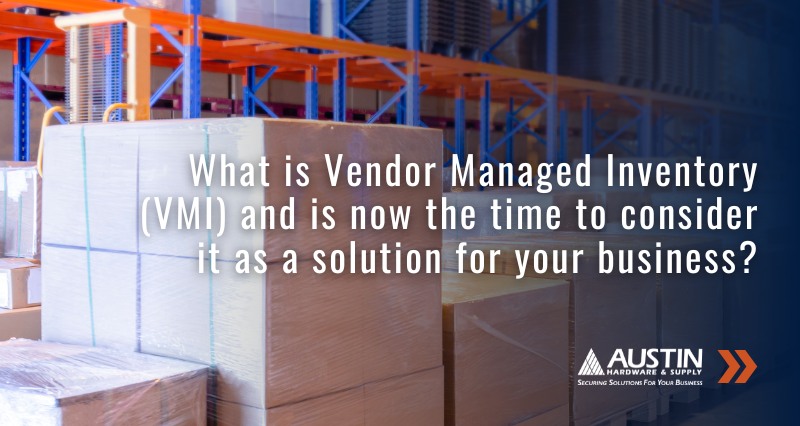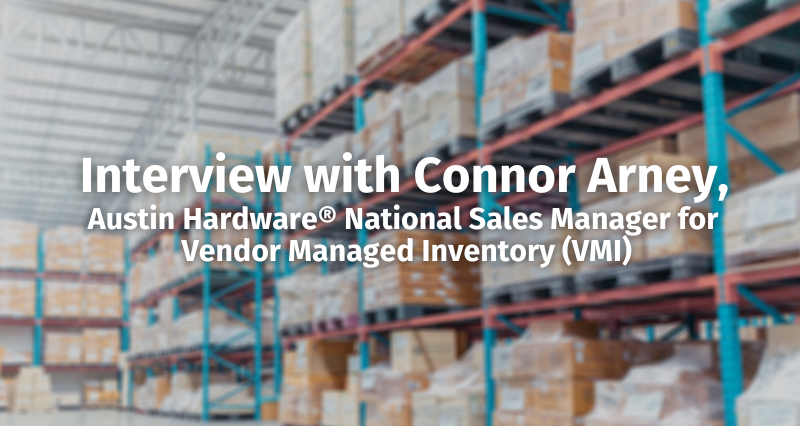Maximizing Efficiency with Vendor Managed Inventory and eTurns TrackStock for High-Turn Items
Topics: Vendor Managed Inventory, inventory management, fasteners
Powering Renewables: How Vendor-Managed Inventory Enhances Supply Chains for Solar and Wind Energy
Powering Renewables: How Vendor-Managed Inventory Enhances Supply Chains for Solar and Wind Energy
The renewable energy sector is rapidly growing as the world shifts toward cleaner and more sustainable energy sources. However, this growth presents logistical challenges, particularly in managing the supply chain for essential components. Vendor-managed inventory (VMI) is emerging as a transformative solution for optimizing supply chains in solar and wind energy projects. VMI ensures that critical materials are consistently available while also reducing costs and inefficiencies.
Topics: Vendor Managed Inventory, Austin Hardware® News, Innovative Solutions, Renewable Energy
Sustainability in VMI: Reducing Waste Through Better Forecasting.
Sustainability in VMI: Reducing Waste Through Better Forecasting
Vendor Managed Inventory (VMI) can be an invaluable tool for modern businesses aiming to reduce waste, improve efficiency, and meet global environmental standards. By focusing on better forecasting and embracing technology, companies can create a more sustainable supply chain while maintaining profitability and customer satisfaction.
Topics: Vendor Managed Inventory, inventory management, Renewable Energy
Why Vendor-Managed Inventory is More Important Than Ever
Why Vendor-Managed Inventory is More Important Than Ever
Vendor-managed inventory is no longer just a supply chain strategy; it’s necessary in today’s economic environment. Businesses face a combination of challenges, including inflation, trade tariffs, and disruptions in the supply chain. Efficient inventory management has become more critical than ever, and Vendor Managed Inventory (VMI) offers an effective solution. Companies implementing VMI can now enhance their resilience, improve efficiency, and achieve significant cost savings—benefits that can be fully realized by the end of 2025.
Blind rivets have several advantages over other permanently installed fasteners, such as solid or semi-tubular rivets, clinch fasteners, and traditional nuts and bolts. Because they can be installed from one side of the application, their use is paramount when the back side of an application is limited or non-existent. This also makes them more cost-efficient and versatile than other types of fasteners.
The Basic Elements of Blind Rivets
There are four basic elements to a blind rivet:
- 1. Material
- 2. Diameter
- 3. Grip Range
- 4. Head Style
Blind rivets are available in a wide range of materials, diameters, grip ranges, and head styles, allowing them to be used in a wide array of applications. We will explore these elements further and discuss their significance in maximizing joint integrity.
MATERIAL
While most common blind rivets are available in aluminum, steel, and stainless steel, they are also available in copper, brass, and plastic. These softer rivets have become more common with the increased use of composite materials.
A good rule of thumb when selecting a blind rivet is to use the same material rivet as the substrate into which it is being installed. If you are riveting sheets of steel together, use a steel rivet. The same goes for aluminum and stainless steel. This is important because, depending on the environment, using dissimilar metals may result in galvanic corrosion. In cases where this rule cannot be followed, consider using Eck Complete Corrosion Control, which you can learn more about HERE.
Topics: Vendor Managed Inventory, Austin Hardware® News, fasteners, Blind Rivets
What is Vendor Managed Inventory (VMI) and is now the time to consider it as a solution for your business?
Topics: Vendor Managed Inventory, Warehouse Management, inventory management
Interview with Connor Arney, Austin Hardware National Sales Manager for Vendor Managed Inventory (VMI)
Q & A with Connor Arney, Austin Hardware and Supply National Sales Manager for VMI
AH: Can you explain vendor-managed inventory (VMI) and how it works?CA: Vendor-managed inventory is an arrangement between the customer and supplier in which the vendor takes responsibility for managing and replenishing stock levels of agreed-upon parts and products at the customer's customer's location.
Topics: Vendor Managed Inventory, Austin Hardware® News, Warehouse Management, inventory management
Learn More About the Differences Between VMI and CMI.
The Differences Between VMI and CMI
Vendor Managed Inventory (VMI) and Customer Managed Inventory (CMI) are inventory management programs that differ in responsibility for managing inventory.
In a VMI program, the vendor (supplier) manages the customer's inventory levels. The vendor collects customer usage data from sales forecasts, inventory levels, or other key metrics to determine when and how much product to deliver. In a VMI program, the vendor takes on the responsibility, and subsequent risk, of maintaining appropriate stock levels to balance inventory with costs for optimal cash flow. The customer benefits from a more streamlined supply chain and reduced inventory holding costs while having to invest less time and personnel resources into inventory management.
Finding the Right Solutions for Your Supply Chain with the Austin Hardware® Guarantee.
Finding the Right Solutions for Your Supply Chain with Austin Hardware®
The job of securing your business data and ensuring your supply chain runs smoothly is critical. In light of recent world events, that job also has never been more challenging.
As a source of solutions for your business, we can't be too thorough or too careful, which is why everything we do at Austin Hardware®, from the training of our employees to the safeguards on our e-commerce website, are designed to achieve those goals.
We utilize state-of-the-art inventory management software to provide accurate, current inventory levels, ensuring you have safety stock to avoid crucial line-down situations.
Your Complete Guide to Fastener Nuts, A New Austin Hardware® Two-Part Blog Series.
Topics: Vendor Managed Inventory, fasteners, Blog

















